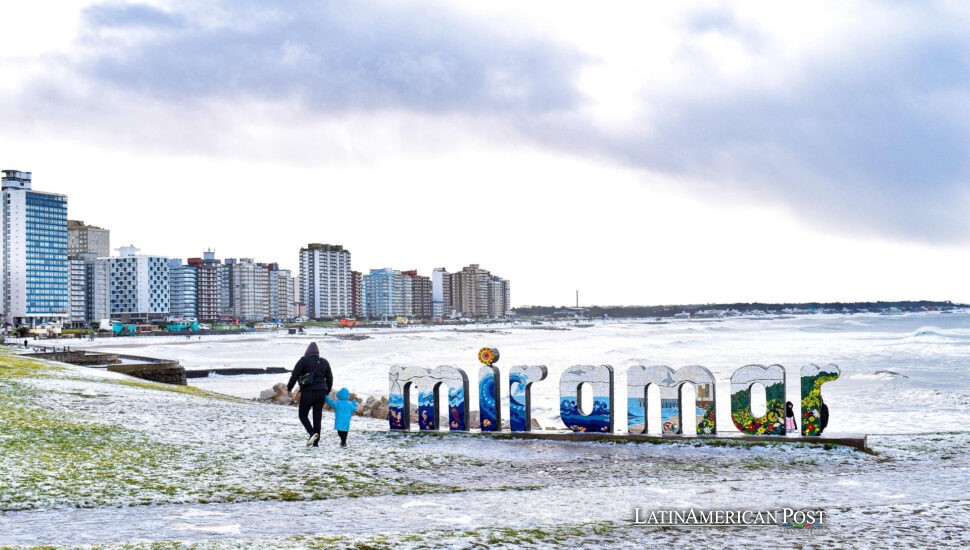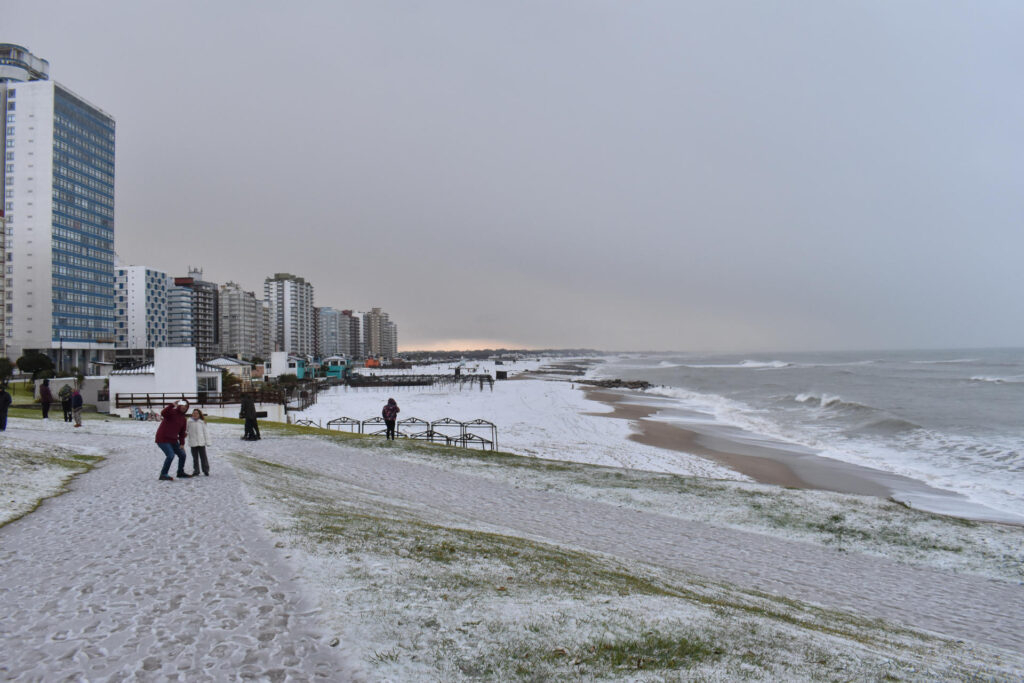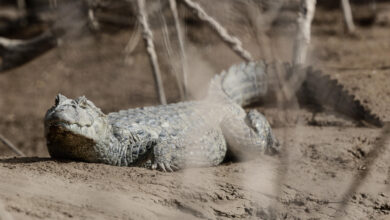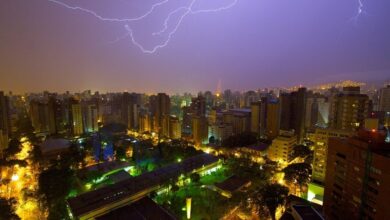Scorched in Greece, Frozen in South America: How a Swinging Climate Is Rewriting the Planet’s Extremes

As wildfires tear across Greece and freezing winds snap power lines in Argentina, the world is witnessing two distinct versions of climate shock unfolding in opposite directions. Scientists say these extremes aren’t contradictory—they’re connected. And they may be warning signs of what’s still to come.
A Fire Season on Fast-Forward in Southern Europe
In the hills of Crete, smoke curled over pine groves as 230 firefighters battled a blaze that refused to sleep. Winds gusted past 60 miles per hour, fanning flames like a blowtorch. By the third day, more than 5,000 tourists had been evacuated from beachfront hotels and huddled into makeshift shelters.
“The wind behaved like a flamethrower,” a fire crew leader told EFE, watching charred shrubs smolder along the highway.
Just outside Athens, another fire crept dangerously close to homes before planes and emergency texts helped guide 800 residents to safety. It’s the fourth consecutive summer that Greece has endured a heatwave intense enough to rank among the top one percent of recorded temperatures since the 1960s.
Climatologist Dr. Ioanna Kalabokidou at Aristotle University says the fire season used to begin in August. Now, she says, the heat arrives in May, dries out vegetation, and peaks long before high summer ends.
In Spain, firefighters in Catalonia faced down a 12,000-acre blaze near La Segarra, its spread fueled by pyrocumulus clouds that stirred 77 mph winds. Two volunteer responders were killed when their vehicle overturned.
What’s driving these brutal conditions? A marine heatwave in the eastern Mediterranean is storing extra humidity and energy, acting like a ticking time bomb. According to Dr. David García-Domingo at the University of Zaragoza, when hot inland air meets that charged atmosphere, it triggers violent convection—a fancy way of saying: the oceans are now feeding their fires.
As Europe Burns, South America Freezes
Thousands of miles away and on the other side of the equator, a very different crisis is unfolding.
Between June 30 and July 3, an Antarctic cold front surged across Argentina, Uruguay, Chile, and Paraguay, smashing records and bringing the coldest early-July temperatures seen in decades.
Snow fell in Miramar for the first time since 1990. Temperatures in Patagonia dropped to -0.4°F. In Montevideo, the high barely reached 42°F, prompting Uruguay’s first nationwide red alert for cold in 20 years.
“This is the strongest polar incursion since at least 1984,” said climatologist Carolina Vera of the University of Buenos Aires.
Behind the chill: a weakened polar vortex, shifting jet streams, and lingering La Niña-like sea-surface anomalies—all of which scrambled Southern Hemisphere air patterns.
The cold hit hard. Argentina cut gas to factories to protect home heating, which in turn caused supply chain slowdowns and a 50% spike in propane prices overnight. Electrical grids are overloaded. Entire neighborhoods in Buenos Aires went dark for 24 hours.
However, the most significant toll was felt on the streets. In just ten days, nine people died of exposure in Argentina, confirmed by NGO Proyecto 7. In Uruguay, seven more perished, despite emergency shelters being opened in police stations and churches.
And in Chile, snowfall blanketed parts of the Atacama Desert, grounding copper exports and costing mining operations an estimated $18 million, according to the University of Chile’s Mining Economics Institute.
Two Extremes, One Disrupted System
To the casual observer, it might seem like the planet’s gone mad—fire here, frost there. But to climate scientists, it’s all part of a single, destabilizing story.
“The atmosphere is like a seesaw,” said Dr. Lisa Benton of the Max Planck Institute for Meteorology. “When you push heat into one part of the system, something else has to give.”
Last winter’s El Niño redistributed oceanic heat toward the North Atlantic, strengthening the jet stream that pushes Saharan air into Europe. Simultaneously, shifts in Southern Hemisphere Rossby waves allowed Antarctic air to plunge deep into South America.
Recent work published in Nature Climate Change confirms this global pattern. As the climate warms, extreme temperature gradients are intensifying, increasing the likelihood that one hemisphere experiences extreme heat while the other experiences extreme cold.
But there’s an imbalance in how these events are perceived.
Greek fires dominate global headlines, with EU firefighting planes deployed and tourist infrastructure mobilized. Meanwhile, South America’s deep freeze gets far less international airtime, even as governments open shelters and gas lines rupture.
Sociologist Gabriela Pérez of the University of the Republic in Montevideo attributes this to a form of “visibility bias.” Fires are dramatic. Hypothermia is silent.
“A burning hotel sells urgency,” she said. “A body in a doorway tells a slower, sadder story society doesn’t like to see.”

A Global Emergency Requires Local Adaptation
What these dual catastrophes share, beyond weather, is the exposure of deep policy failures.
In the Mediterranean, countries have invested heavily in aircraft and firefighting tech, but have done little to control where homes are built. Suburban development continues to creep into fire-prone pine zones, often without fire-resistant design or mandatory safety standards.
In Spain, an alarming 40% of rural land now lies abandoned, creating dangerous corridors of unchecked fuel for fires to race through.
In the Southern Cone, the issue is more basic: energy poverty.
Argentina subsidizes home heating but underfunds pipeline maintenance, leaving poorer districts vulnerable during supply shortages. In Uruguay, shelters managed to house 2,800 people during the red alert; however, NGOs estimate that over 6,000 people live on the streets. As activist Jorgelina Di Iorio told EFE, “Cold doesn’t kill. Neglect does.” Meanwhile, the science keeps coming.
The World Weather Attribution consortium recently found that the likelihood of a Crete-style wildfire season has doubled since 1990, while the chance of a South American polar air outbreak is also rising due to declining Antarctic sea ice.
Cutting emissions remains critical. But so does adaptation: more resilient housing, upgraded grids, permanent shelters, and more innovative land use.
Also Read: The Fire Consuming Europe: A Warning for Latin America
Because climate chaos is no longer something we wait for—it’s here. And whether you’re baking in Athens or freezing in Buenos Aires, the question is no longer if the extremes will come. It’s what you’ll do when they arrive.




